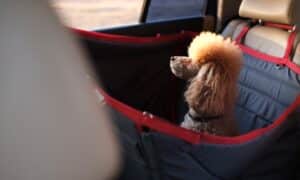With their thick fluffy coats and sharp intelligent faces, it is easy to see how Spitzes have become an enduring companion to humans. There are many dog breeds that can be categorized as Spitz-type dogs, but most of them share some basic characteristics.
It is not known where Spitzes originally came from, but many of the modern dog breeds which can be classified as Spitz today trace their origins back to the Arctic.
The Spitz-type dog goes back almost 5000 years, and there is some belief that the breed has been regularly bred with wolves to promote a greater degree of intelligence and hardiness.
The Alaskan Malemute, for example, is thought to be descended from the crossing of the Spitz with wolves.
For most of history, the Spitz has been used as a hunting dog, a herding dog or a guard dog, and as such has proven itself quite valuable to human in a number of different ways. Around 1000 BC, Spitze migrated south from their native Arctic climes, and they were soon common in Europe, North America and Asia. They even traveled as far south as northern Africa.
From there, you can see the development of the variety of dog breeds that are considered Spitz-type dogs. One highly recognizable dog breed is the German Spitz and the Finnish Spitz. They have the characteristic thick coat, triangular ears and lupine face of the breed. In Japan, one can see that the Akito Inu is a direct descendant of the Arctic Spitz breed. The Pomeranian
If you enjoy the looks of the Spitz dog breeds, there is probably a breed out there that will suit you and match this phenotype.
For instance, the Pomeranian that was mentioned above is a well-known favorite of apartment dwellers and those who live a lone. While these dogs can be a little high strung and difficult around children, they make excellent pets for single people with a limited amount of space.
If you are interested in a small dog that is good with children, think about Corgi, which can be quite good with small children, provided the children are taught how to handle dogs. For a more energetic family, consider the Siberian Husky, which has a gentle temperament and, due to its strong pack instinct, thrives on both social and physical activity.
Make sure that you will be able to tend to the various needs of the breed that you choose. Corgis, for example, do require a certain amount of grooming, and because they are a little fractious, will benefit from thorough handling as puppies.
Huskies require a certain amount of fish oil in their diets to keep their coat and nails looking their best while.
Chows, another Spitz breed, need an owner who understands their stubborn, independent nature as well as one who will watch them for the breed’s elbow dysplasia.
If you are interested in a Spitz, do some research to find out what breed of Spitz is best for you and your situation.
By getting to know the breeds involved, you can figure out which type of Spitz will be ideal for you and your home.





